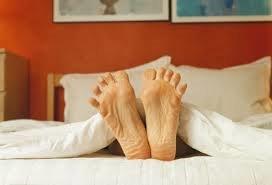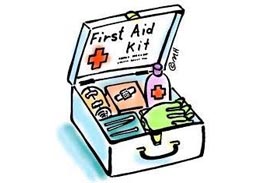Let there be light
Kerosene is one of the older fossil fuels still in demand and one of the most versatile. Most of the people in my age bracket, and current homesteaders, think of kerosene for lamplights, and rightly so when we lose power this winter.
When Edison was working on the electric light bulb, kerosene lamps had evolved by need for brighter light than the pressure lamps of the day that you now see sold under the Coleman ™ name as well as non-pressure Aladdin Lamps ™.
With candles being a mainstay for centuries as a source of light, beeswax candles being the best, you had to contend with heat. A movie depicting the 1800’s dinner party with many, many candles about, many placed in crystal, glass, or mirror backs to provide more illumination were really intolerable hot events in the summer time. However, since homes were not well heated in the wintertime and everyone wore coats in the house, a visitor prompted more and better candles to be brought forth, and the heat was relished. In those days before TV and radio a visitor was expected to entertain the host and family with the latest news, gossip and sometimes book readings. Many of our earliest forefathers of government became known for their dinner oratory.
It was not until 1830, or so, when a French chemist invented “styrene” candles, that made light available for the poor. It was quite true about President Lincoln reading by firelight as beeswax candles were dear in price, not always available and most people sat in the dark and talked, or went to bed. Up with the chickens at dawn’s early light.
Another source of lighting in the old days was rush lights. Rushes were cut, stripped, dried and soaked in tallow. Hung through a metal loops and burned at the end, they gave off a light a bit brighter than a candle, but tallow was smoky and sheep fat smells like old wet sheep. These were reserved for the poor.
Somewhere in the later 1800’s the kerosene wick lamp was developed and a brighter source of light evolved. It is noted that contemporary pre-lamp drawings of the 1850’s depicted cats sitting in the mistress lap, and after the lamp evolved and spread small dogs were in the paintings. Even today the rule of the house is cats stay out of the dining area since cats like tables and rubbing against furniture. A warm lamp is a favorite and once pushed to the floor and broken, the kerosene fuel burns quickly and you loose the house.
Ornate large glass lamps that were a hazard often decorated the homes of the Victorian era. But the need to stay in the fashion dictated more danger. No doubt Mrs. O’Leary and her infamous cow that started the great Chicago Fire was a glass kerosene lamp. Cows kick. Lamps fall and break. Barns burn. Not to get off the subject at this point but as a matter of safety I use a Coleman™ electric battery fluorescent lamp that poses no hazards when poking about the barn at night for early morning feedings of the baby goats. As rule in my father’s day, with kerosene lamps, was to have a bucket of sand in the room in case of an emergency breakage to smother the oil fire. Of course today we have modern fire extinguishers, (I have one in each room) but how many of us are still going to get one, “one of these days”. Throwing water on the oil will just spread the fire.
Even today glass lamps are still sold but they are a hazard as the old time rules about children, cats and sand buckets are forgotten knowledge. Elegant metal lamps, tall and about 12 candlepower with the vertical tall glass chimney can be had in the $40.00 to $70.00 range. Some are rigged to hang from the ceiling, and have (I hope) a heat bell above the chimney to prevent starting a ceiling fire. Table lamps are nice, some in all glass, and some in metal bases (which are best).
If you are camping, working on the railroad, or want a safer lamp without the charm of inside lamps, a Dietz (TM) series of USA manufacture lamps are available. These were the original railroad style, designed for rugged durability and just as good, or better, for inside use. The smaller lamps of ten-inch height give off about six candlepower of light and burn about seven hours on eight ounces of fuel. The Dietz Jupiter model and the Dietz #8 give out about fourteen candlepower and offer 75 hours of light on 100 ounces of fuel. All of these “safety” lamps give off top heat in the range of 1400 BTU’s per hour and can be used like the candles of old to quickly warm a room, greenhouse, or cold frame, on bitter nights. No matter how well designed these are if they are set next to combustible material or tipped over, they may start a fire.
Even though I cannot imagine anyone using explosive gasoline in a kerosene wick lamp, there does exist 2 grades of kerosene and 2 grades of lamp oil. I might add that whales once provided all the lamp oil until kerosene became popular in the beginning of WWI. Whale oil smelled like a burning tire, but kerosene has its own stink too. Most people will use K1 kerosene for lamps and stoves. I do not like lamp oil, as it will, like whale oil, congeal into grease in cold weather. It is not as reliable as kerosene that remains viable into the low minus 60’s. For the curious, whale oil was still sold in Asia when I was there in the 1970’s.
K1 kerosene in volume purchase from a dealer is now filled with dye. This dye will create a noxious fume for lamps and stoves. The reason for the dye is because people mix it with their diesel for truck use in cold weather and this is a way of paying road tax. If you want crystal clear Kerosene you can go to Wal*Mart™ and purchase their 1K clear no dye kerosene at about @$8.00 a gallon-next to the kerosene heaters. This will disappear fast as the season gets colder.
When the lamp is cold you need to clean the glass chimney and trim the wick for clearer bright light. Experience will develop in time. Have patience.
The way to go, but at a higher cost, is the Aladdin Lamp ™ sold as a mantel non-pressurized lamp. These are really great, boosting the candlepower up to a 45 or 60-watt electric lamp equivalent. Follow directions exactly and you will be rewarded. Use 1K, or number 1 extra-refined lamp oil at about $17.00 a gallon. The latter is necessary if you keep exotic birds since the fumes given off by kerosene, especially in a modern California styled, sealed tight house, may injure the birds. Probably would not do us any good either. I have a nice 1800’s drafty farmhouse, ideal for 1800’s technology.
An excellent local source of lamps for the homesteader, or nostalgic, is the Farmer’s Supply in downtown Floyd Virginia.
We are all familiar with stores stocking endless kerosene heating stoves after Halloween for the winter season. They are all excellent and have modern tip over safety features, and some have oxygen depletion sensors. However, when the stove is off and cold, then take it outside to refill with 1K. By the way, 1K can be a Federal tax credit for you if you have your salesman give you a receipt specifying that you bought 1K, how many gallons and the tax. I have several kerosene space heaters not only for warming cold bathrooms in January, but for back-up chicken brooding on occasion, workshop heat, and pipes that may freeze.
Another source for the “off the Grid” is kerosene refrigerators and freezers. I suspect that they may still make kerosene cook stoves but I have not seen any outside of military surplus catalogs for years. Toasting bread on a kerosene wick is disgusting. Blair Clark at Clark’s Gas and Oil in Floyd told me that he sold several propane and kerosene refrigerators during the Y2K scare. He has some fair prices. You might also want to check www.rockygrove.com for a printout on propane and kerosene refrigerators and freezers.
As I have mentioned we used to put the kerosene and propane refrigerators out on the north side porch since they are not as efficient as a modern electric unit. There have been many jokes about hillbillies, and their porch ornaments, but it is a necessity in a Back2theLand environment.
Contact me at: back2theland@swva.net
Copyright: 2008 Back2theLand, Mark Steel



